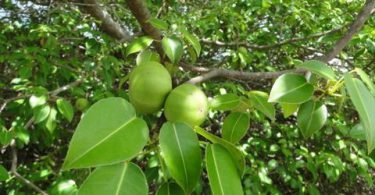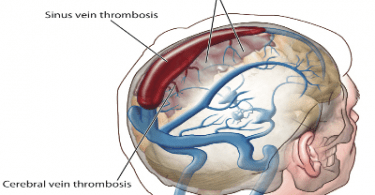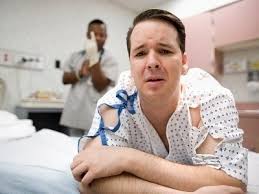Abstract: Development of nation depends upon child health. Infantile disorders need especial attention, because if we treat them thoroughly, then we can easily abort future consequence of sickness. Infant case taking, treatment & management are really needed to modify for better homoeopathic practice. So here I discuss only a basic guide line that how to handle infantile disorder obeying homoeopathic principle and philosophy.
Introduction
Child is a Father of Man’. Infant health is expression of parental WILL (in most of the cases) except in few accidental pauses. So impact of parental perversion not only transmitted to neonate it can also express through infantile sickness.
Infantile disorder can be classified into:
1. Congenital disorder/purely surgical (such as- cleft lip, cleft palate, congenital heart disorder, hematological disorder, hernia, congenital tumor etc.).
2. Acquired
a) Physical disorder such as ARDS, Jaundice, Oral thrust, diarrhea, infection of eye, mumps, measles, whooping cough, ENT disorder ASOM, CSOM, Otalgia, injury (instrumental/ accidental), skin infection etc.
b) Behavioral disorder coprophagious habit of child, thumb sucking etc.
c) Developmental disorder delayed mile–stone,
d) Artificial sickness- due to habit of artificial food, bad effect of medication, chronic poisoning, bad effect from vaccination.
Morbidity and mortality rate of following sickness time to time varies because these sicknesses are ‘ modified by environmental factor, personal hygiene, implementation of National control program, genetic mutation, over caring/ careless attitude etc.
Infant sickness is not an isolated phenomena, it is provoked by paternal and maternal WILL during conception, their miasmatic state, environment of womb, circumstantial changes of mother during pregnancy, any accident, maternal sickness during pregnancy, measures taking during pregnancy (in the name of investigation, or treatmental measure). So infantile disorder can not only be studied via pathological nomenclature, it can be studied in different dimension. Each pathological changes much have some etiological background which are reflected via infantile disorder (in the name of nosological nomenclature and characteristic picture too). It is beauty of homoeopathy – that how concept of individualization is framing and applied in different dimension of treatment which widens our angle of prescription.
Discussion
My experience is very short and my failure rates at initial phage of practice (especially dealing with infant) were maximum. It is difficult to deal infantile disorder because in such cases we are bound to read patient sickness through sign only- no symptoms (as nothing is narrated by patient). Totality is usually based on sign (uncommon in respect of disease pathology), causation and symptoms of mother during pregnancy.
It is quite difficult for a beginner to understand infant sickness via mode of expression (body language) of baby. Some time difficulties found in its correct interpretation. So here I mention few points through which we can enrich our case taking and can modify our observation with correct interpretation.
1. History taking from attendants- whether child is wanted or unwanted, intra uterine history (in this phage expression of child visualized through mother’s feelings and behavior, attitudes and other generalities. The cry of the unborn creature manifested through mother’s behavior, desires, cravings and aversions, hate and love feelings, dreams and many more such resources meant to decode the facts and turn them into therapeutic measures.), mode of delivery, complication during labour, delayed crying, pre-maturity, post-maturity, history of first illness of infant, any significant etiological factor narrated by parents.
2. General examination of child- (mention in Pediatrics text book) few significant points in respect of homoeopathic prescription, such as any over growth, moles, discoloration of skin, tongue, fissures, sutures, fontanelle, character of body discharge, hair pattern (rough, course, curled, smooth, shine), face (nose bridge, sharp pointed, depress, flapping of ale of nose, chin, ear lobules), eye lashes, pupils etc.
3. A child non-verbally can communicate with us equally; as we are verbally communicate with each other. So we have to notice each and every reaction of child during interrogation.
a) Observe reaction of child towards sudden noise.
b) Observe reaction of child towards light/ darkness.
c) Observe reaction of child towards warm attention (whether enjoying/ rejecting).
d) Observe reaction of child on touching his body parts/ how he reacts on holding in lap.
e) Observe reaction of child towards playing article.
f) Observe reaction of child towards carrying, rocking/ liking or disliking mother or father lap etc.
4) Important sign of infant i.e.- sleeping posture, screaming during sleep, time of sleeping, perspiration (location, order, nature), nature and character of urine, stool, expectoration etc
5) Post- vaccination reaction of child.
6) Way of crying of child- sobbing, screaming etc.
7. Mile-stone disorders.
8) Lactation – emotional state of mother during lactation.
9) Food habit of child.
So if presenting scenario is not enough for prescription then go back to one stapes ahead to search resources of sickness in form of first illness, if nothing significant then go back in intra–uterine history, if still it is insignificant then go back to family history. Such a chain of anamnesis will definitely help to reach correct prescription.
Therapeutic Approach Towards Infantile Disorder
Story of successful case never teach us a lot as a failure case can do. So I am not interested to narrate my successful case but I am interested to share my learning mostly from my failure case.
Preventive Measures
It is really foolish to say correct dehydration, promoting breast feeding in diarrheal disease/ promoting hygienic practice to prevent infection/ avoid artificial food etc. Preventive approach in truest sense of homoeopathy for infant sickness started not after child birth, it is prior to that as Hahnemann mention about anti-psoric treatment during pregnancy, but if we deeply follow homoeopathic philosophy, it should be started not during period of conception but beyond that, i.e.- from the very beginning in a form of correction/provocation of mother and father will power in respect of positive acceptation towards the new life. It is ideal way of prevention for better future generation.
Treatment During Pregnancy
There is no separate rule for treatment of a mother during pregnancy. A physician should take certain precaution during treatment of pregnant lady i.e.-
1. During case taking we should take careful attention that which symptom is belong to mother and which is belong to fetus.
2. Avoid giving abortive medicine.
3. Avoid too much drugging.
4. Proper antimiasmatic treatment. Each and every stage of pregnancy requires best psychological supports, physician assurance, family supports, with optimum diet and regimen too.
Healthy care of baby: other than medicinal treatment of baby, it is very important to sensitized prance regarding new responsibly of them.
It is responsibility of physician to build up a healthy relationship between child and parents, to encourage them to provide sufficient freedom, that’s why promoting healthy development of baby. Over caring and carelessness may equally ruined the child health. It is better avoided to treat those acute episodes which can easily managed by defense mechanism of body/ avoid treating those acute which gives life long immunity.
Lastly, I want to add one more thing that when the case is beyond the coverage of dynamic medicine (pure surgical disease/gross congenital malformation), it is better to refer them or to take help of other supportive therapy.
Conclusion
These article only an effort to understand different dimension of case taking of infantile disorder and how to frame angle of prescription in infantile disorder. With respecting homoeopathic principle and philosophy how beautifully we can mange infantile disorder – since very beginning of life in mother womb.
Child is only safe in safe womb and in safe hand of physician.
References
1. Hahnemann, Samuel. “Organon of Medicine”, Translated from 5th edition with an appendix by R.E. Dudgeon; with Additions and Alterations as per Sixth edition translated by William Boericke, B. Jain Publishers Pvt. Ltd., New Delhi, 2003.
2. Hahnemann, Samuel. “The Chronic Diseases – Their Peculiar Nature and Their Homoeopathic Cure”, Translated from the Second Enlarged German edition by Prof. Louis H. Tafel; B.Jain Publishers Pvt. Ltd., New Delhi, 1997; Pg.138.
3. Kent, J.T., “Lectures on Homoeopathic Philosophy”, Reprint edition, New Delhi: Indian Book and Periodical Publishers., 2002.
4. Roberts, Herbert A. “The Principles and Art of Cure by Homoeopathy”, B. Jain Publishers (Pvt.) Ltd., New Delhi, 1996
Source: The Homoeopathic Heritage





